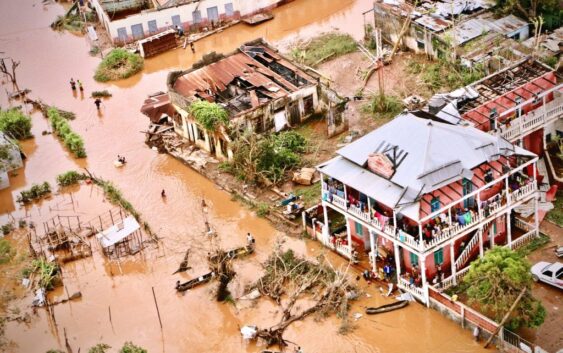FLOOD CONTROL INFRASTRUCTURE: WHY AFRICA NEEDS TO INVEST

The world today is experiencing devastating weather events that are leaving our infrastructure, facilities, and humanity vulnerable.
We see stormwater overwhelming drainage facilities. Aging buildings are also giving way in heavy storms. As you know, many of the facilities and infrastructure that serve us today were designed and constructed many years ago.
So, we believe that many of the facilities have served up their service lives. Thus, it is about time to start planning for their replacements, since their maintenance seems to be costing us too much.
Many of our roads, and bridges are now giving way to extreme weather. It has become clear that we must invest in resilient facilities and infrastructure. If this does not ring a loud bell, the example of the Pakistan floods should make it clear.
The rising water levels continue to displace people. They are damaging roads and other infrastructures.
These events, now so common in towns and cities show that the storms are now too much for the facilities to manage. Yet these towns and cities continue to grow because of the attraction caused by opportunities in them.
Together with the expanding urban centers, there is pressure on the existing facilities, hence the need to respond and meet the needs of our growing population.
It is time to ensure that development complies with all the requirements including cross-cutting issues, otherwise, the future of humanity could be problematic.
Serious consideration now must be given to protecting the environment. Let’s encourage and maintain green cities. The failure to consider environmental factors in development means that when the weather is poor, humanity faces backfire.
The recent weather events provide evidence that we have been disrespectful to the environment in a way. That is why these events continue to undermine our development. Additionally, we need to implement programs that ensure the resilience of our infrastructure because resilient populations withstand such weather shocks.
The most vulnerable people are not worried about these hazards. Otherwise, when motorcycle riders and taxi drivers navigate the flooded roads, they worry about drowning in the deep drainage facility.
Vulnerable people who settle in hazard-prone places need these facilities even more since they are ill-prepared to respond to and recover from severe weather setbacks. When such events happen, they lose their habitats and livelihoods.
It is commendable to see city authorities improving drainage systems to solve the flooding problem. There is a need to widen open stormwater channels to accommodate running water and leave populations safe from floods. Additionally, sub-surface drainage must be well connected to take care of the large volumes of water.
On the other hand, before approving building plans, authorities must be very particular about drainage facilities and the provision of green spaces. Submitting plans for approval is for the good of everyone and gives us the comfort that intending developers are complying with requirements.
There should also be an audit of all existing infrastructures to ensure they comply with planning requirements. It allows the implementation of corrective actions and mitigations for facilities that do not comply.
With all the above done, we will be in control of the problems that cities face nowadays and in the future. We should not find ourselves in a situation of vulnerability because of weather hazards. The time is now to invest in resilient flood control facilities and have in place a good maintenance program for these facilities.
SOURCE: The Monitor

